By Evin Priest
ROME wasn’t built in a day.
And it certainly wasn’t constructed in the middle of Bass Strait.
Yet those involved in the creation of Ocean Dunes don’t need to be told that. Not after they’ve moved heaven, earth and 285 acres of King Island’s west coast to achieve their golfing dream.
But after four years of hard labour, there is a rather substantial reward:
“An incredible course with some of the most magnificent views in the world of golf,” says general manager Nelson Da Silva.
Formerly a greenkeeper at US Open venue Pinehurst No.2 and general manager of Launceston’s nine-hole Quamby Estate, Da Silva needed only a few minutes during his job interview to realise the potential of this 18-hole oceanside layout.
“On my first visit to King Island I took one look at Ocean Dunes and I thought, I have to be involved; it’s just too special,” Da Silva recalls.“People are comparing us to Pebble Beach (California). But we have more holes alongside the ocean than Pebble Beach. It’s not every day you get to work at a course that can say that.”

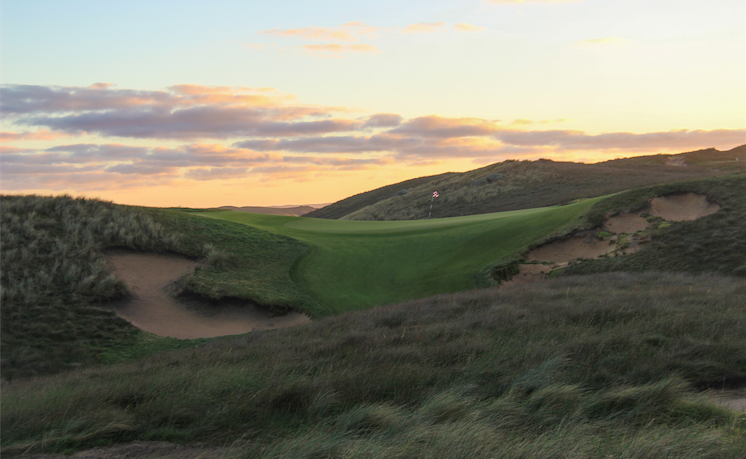
A Labour of Love
Located 4 kilometres outside King Island’s central town of Currie, Ocean Dunes is the passion project of Bernie McMahon, Graeme Grant, Richard Lees and Andrew Mitchell.
The four partners – Grant being the course designer – shared a vision to craft the rugged sand dune corridors, rock formations and natural vegetation along this 2-kilometre stretch of coastline into something truly special. In 2012, the quartet acquired the canvas on which they would paint their Bass Strait masterpiece.
“We purchased our site in December 2012 after receiving all the necessary permits which, among other things, allowed us to build golf holes on a spectacular rocky coastline,” says Grant, a former superintendent at Kingston Heath.
Ocean Dunes was born, and work began on its jaw-dropping front nine. The first hole to grab the golf world’s attention was the fourth – a par 3 featuring a carry across breaking waves between a tee and putting surface both carved out of rock. Anticipation skyrocketed, and it increased when Cape Wickham – 40 minutes north – was garnering world headlines for a stunning oceanside layout designed by Mike DeVries and Darius Oliver. When Cape Wickham opened in October 2015, its island neighbour felt the pressure to follow shortly after.
But Ocean Dunes wasn’t quite ready; it had to be perfect. Fescue greens would have been easier, but it was unanimous bentgrass would provide the truest putting surfaces. A number of tee positions could have been relocated to speed up the process, but the ultimate vision – a dramatic yet raw golf course – would’ve been compromised. All the while, maintenance staff were battling the unrelenting salt spray that comes with such proximity to the ocean.
“It takes time to achieve something incredible,” says Da Silva. “We wanted to ensure the quality of the bentgrass greens, and also the fescue grasses on the fairways, was world-class.
“While constructing the fairways, we stripped the dunes back and replaced them with top soil so the grass wasn’t just growing on sand. When you take a divot, you can see dark matter and that was important for the quality of the turf conditioning.”
Ocean Dunes’ perseverance is symbolised in the 10th tee boxes – seemingly perched out in the middle of the ocean. They are camouflaged with pigface – a coastal succulent – which also protects the manicured tees from salt spray. Their positioning on the rocks creates a thrilling carry to an imposing Redan green.
“We lease that land,” says Da Silva. “We have an environmental permit and the 10th tees were a challenge because Mother Nature is cruel down there.
“But we didn’t settle for a more convenient location, up on the hills to the right, because the tees and the diagonal ocean carry were was necessary to make that par 3 as special as it is now.”
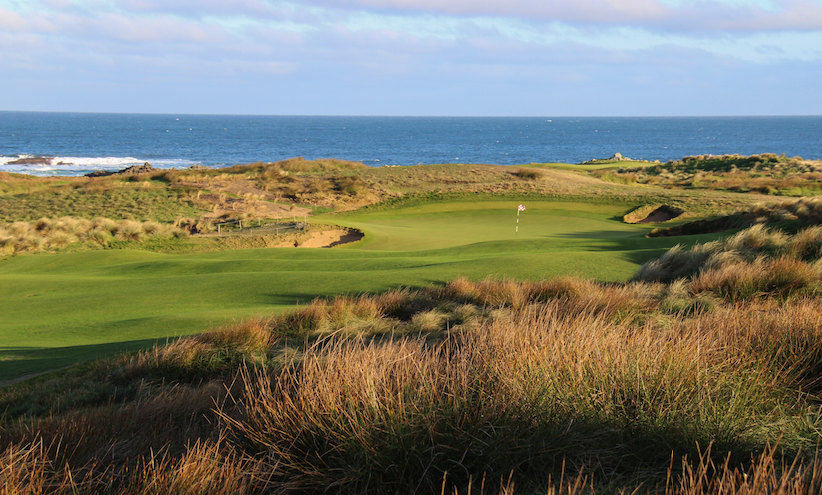
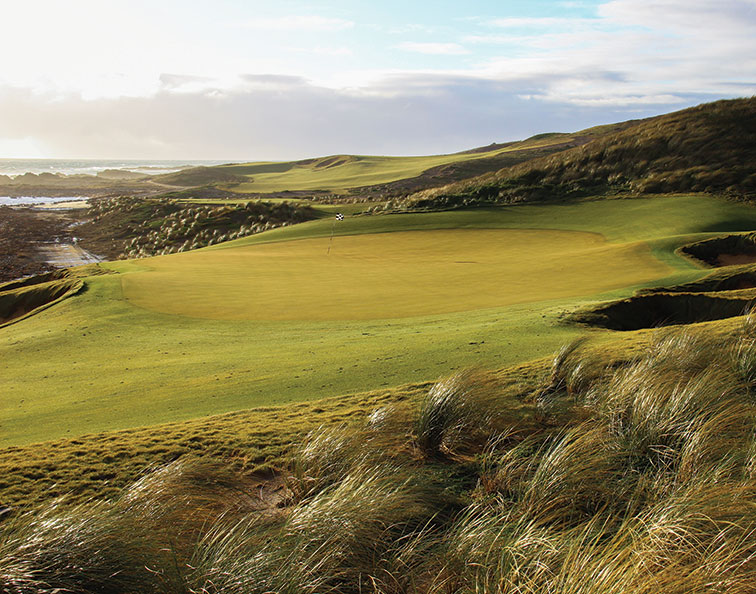
Making a Statement
Only one word can describe the opening six holes at Ocean Dunes: breathtaking.
“It’s phenomenal how raw the golf course is,” says Da Silva. “The first time I set foot on Ocean Dunes, I was gobsmacked at how pure and beautiful and natural it was.”
A remarkable journey along a rocky coastline starts at the par-5 first. Here, an intimidating tee shot over a dune is the prelude to a fairway that doglegs right and spills down to the waves.
The 280-metre par-4 second runs parallel to the water and features a green hidden from the approach behind a large dune. Perhaps the two most difficult holes on the course, the third and fourth are at the mercy of the prevailing winds. At 425m, the par-4 third demands a water carry from the tee, while the fourth [above] could be the most exposed par 3 in world golf. Atop two rocky escarpments, the tees and putting surface here are an unbelievable achievement in golf course construction.
The par-5 fifth is the first hole played off the coast and into the dunes, but supplements excitement with a wildly undulating valley before the green. An elevated tee brings the stratospheric sea views back into play at the par-4 sixth before its split fairway runs back down to water. Though holes seven through nine are inland, the par-3 eighth and its masterful use of the sand hills is just one of countless highlights.
“Although the front nine can be challenging so close to the ocean, there is a huge variety of tees on each hole,” says Da Silva. “Each hole has between four and seven tee options – the sixth has seven tee boxes. We want to educate the golfer to leave the ego at home and play off those forward tees in the wind – golf is supposed to be fun.”
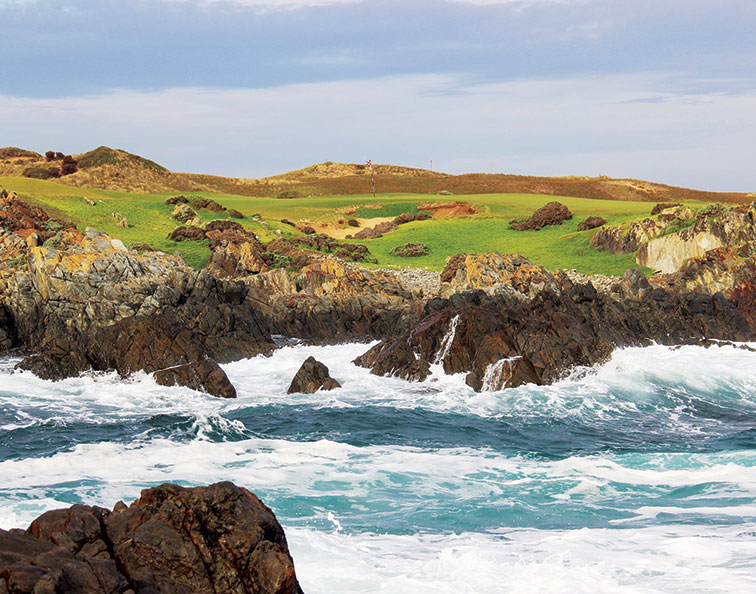
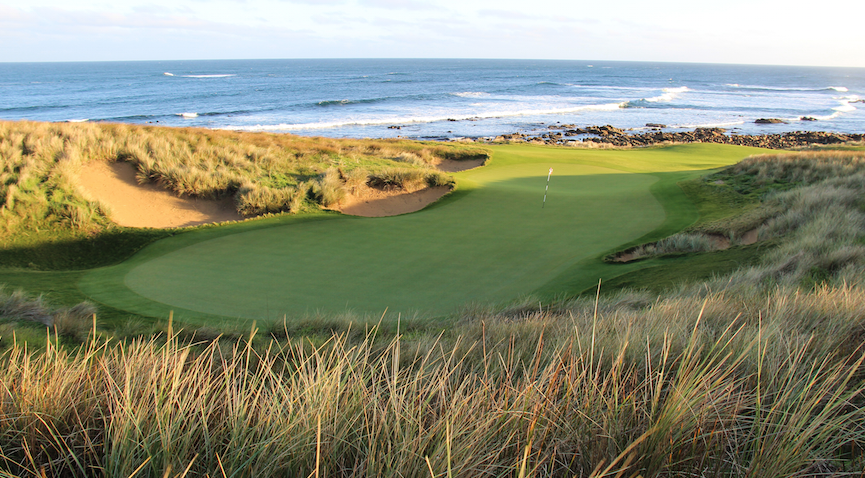
The Inward Nine
The opener to the back nine is not to be outdone by its counterpart at the first – at least in terms of drama. The golfer is greeted by another ocean carry from the tee; this time to a magnificent Redan putting surface. Continuing parallel to the coast, the par-4 11th presents a blind carry over a bunkered hill and down to a green set against the rocks. From here, Ocean Dunes remains primarily inland, though steep changes in elevation keep the ocean panoramas in sight, while hills and sand dunes form relief from the elements. A shared green at the 12th/15th is just one of the many pleasures during a grandstand finish. One final march up a dune corridor to a natural amphitheatre at the 18th [inset left] green is a fitting finish to a memorable round of golf.
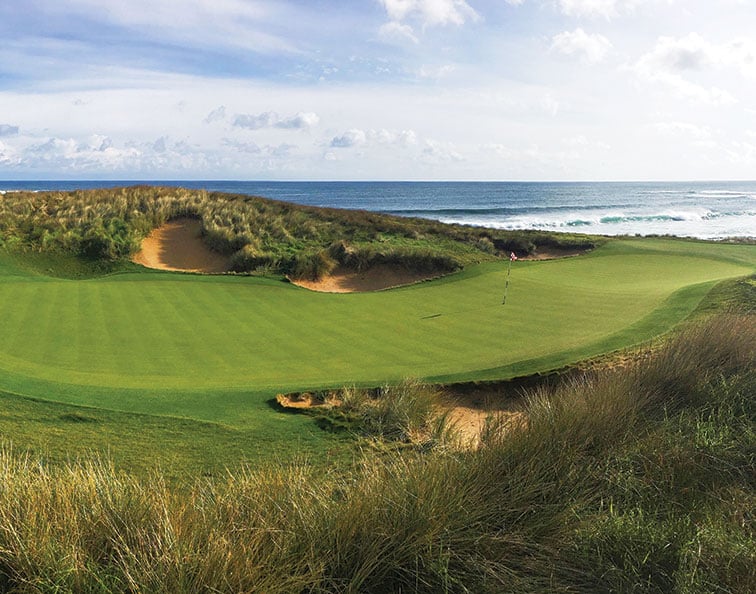

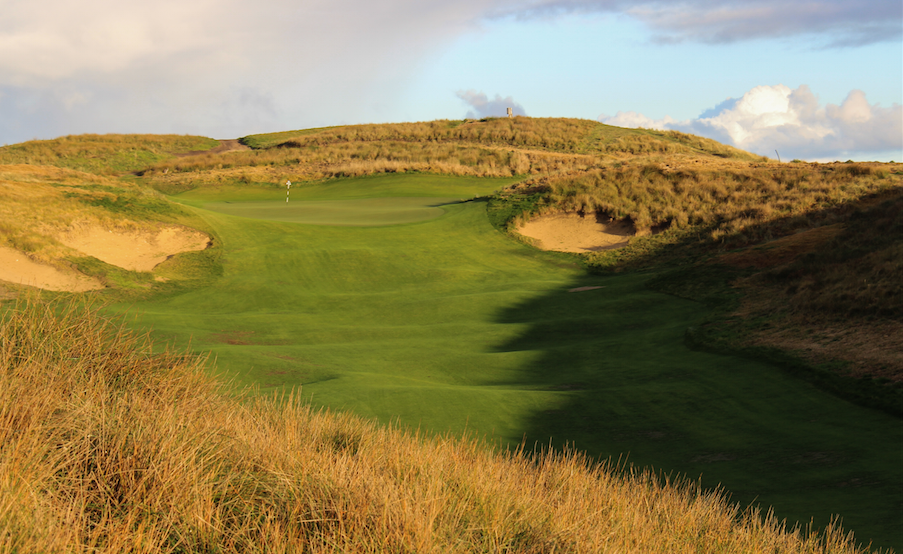
Embrace the Renaissance
Golf could be somewhat of a saviour for King Island. Since the closure of the 100-year-old tungsten mine in 1990 – and the abattoir in 2012 – industry has declined on the island. Predictably, the population dropped from 2,000 to approximately 1,200, while beef producers now pay triple the freight costs to get live cattle off the island to mainland Tasmania.
“I think the two courses [including Cape Wickham] are a shot of hope for the island,” says Da Silva. “It’s exciting; we’re not just creating two golf courses, we’re creating a new industry – a renaissance.” It is inevitable that Ocean Dunes will be compared to Cape Wickham, but the two don’t see it as a competition. In fact, both acknowledge more world-class golf invariably means more visitors. Cape Wickham made a stellar debut at No.24 in the 2016 World’s 100 Greatest Golf Courses ranking (Golf Digest US) , and with Ocean Dunes’ September 1 opening it’s easy to see why the golf world is salivating at the game’s next big destination.
The tourism target is 25,000 visitors a year, up from the current figure of 6,000. “But to achieve that, the whole tourism hospitality package needs to be delivered,” says Da Silva.
Ocean Dunes owns the King Island Hotel – with 12 recently renovated rooms in Currie – but travelling golfers will typically seek luxury.
“During the next five years this island needs to offer high class accommodation and restaurants,” says Da Silva.
“That is our goal for the next few years. The courses are the attraction, but golfers want 4 and 5-star rooms, fine food and great wine. We all need to work together to deliver that product.”
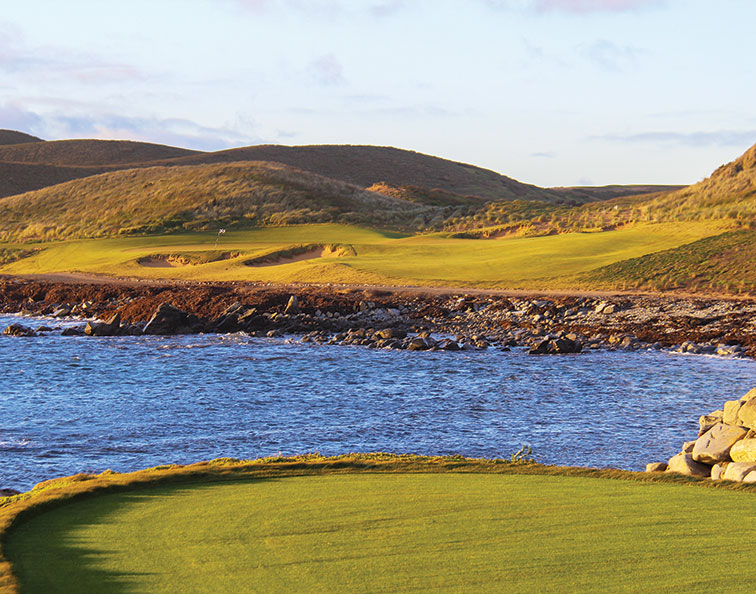
A Destination to be Proud Of
When golf courses along King Island’s rocky coastline were first floated, comparisons were drawn, predictably, to California’s Monterey Peninsula – Cypress Point and Pebble Beach. But American golfers that have made the trek down to Bass Strait (golf writer/author Dr James Hansen included) are waving the white flag. “The experience of a lifetime,” Hansen labelled King Island in Golf Course Architecture magazine.
“The feedback has been amazing,” says Da Silva. “The founders of Ocean Dunes don’t just want to build a golf course; they want to leave a legacy.”
Fortunately for them, this golf course is a mighty fine start.
Ocean Dunes
Par: 72 – 6,435 metres
Web: oceandunes.com.au
Phone: +61 3 6462 1633
Address: 365 North Rd Loorana, TAS 7256
All Photography: Maddi Reed
Did You Know?
The best time to visit King Island is October through March. The warmer weather brings more pleasant golf experiences, but accommodation is usually booked out. Winter is far easier to grab a room but, because of Bass Strait’s unpredictable weather during this time, we recommend at least three days to have the flexibility to wait for decent playing conditions. This quiet period also allows travelling golfers to watch the radar and book trips just days before coming over.
Morning golf is also strongly recommended – Australian Golf Digest visited in late July and teeing off at 7.30am allowed for more than 18 holes to be played. If the weather permits an afternoon round, even better.




